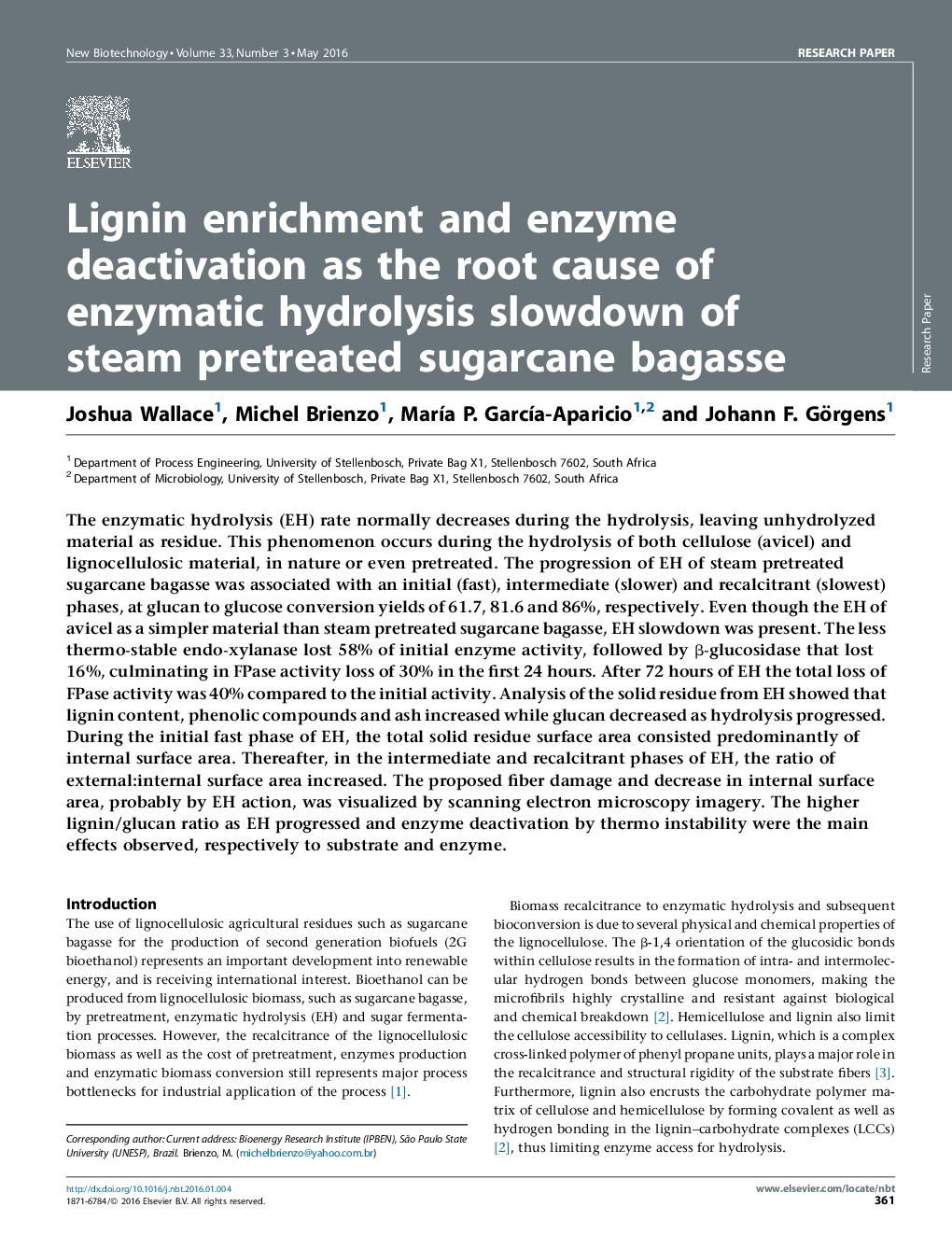| کد مقاله | کد نشریه | سال انتشار | مقاله انگلیسی | نسخه تمام متن |
|---|---|---|---|---|
| 32924 | 44951 | 2016 | 11 صفحه PDF | دانلود رایگان |
• The progress of enzymatic hydrolysis and process slowdown was monitored.
• Enzymatic hydrolysis was associated with fast, intermediate and recalcitrant phases.
• The increased lignin/glucan was the major substrate changes correlated to slowdown.
• Accessibility was the main physicochemical property related to the slowdown.
• There are advantages in to stop the reaction at the intermediate hydrolysis phase.
The enzymatic hydrolysis (EH) rate normally decreases during the hydrolysis, leaving unhydrolyzed material as residue. This phenomenon occurs during the hydrolysis of both cellulose (avicel) and lignocellulosic material, in nature or even pretreated. The progression of EH of steam pretreated sugarcane bagasse was associated with an initial (fast), intermediate (slower) and recalcitrant (slowest) phases, at glucan to glucose conversion yields of 61.7, 81.6 and 86%, respectively. Even though the EH of avicel as a simpler material than steam pretreated sugarcane bagasse, EH slowdown was present. The less thermo-stable endo-xylanase lost 58% of initial enzyme activity, followed by β-glucosidase that lost 16%, culminating in FPase activity loss of 30% in the first 24 hours. After 72 hours of EH the total loss of FPase activity was 40% compared to the initial activity. Analysis of the solid residue from EH showed that lignin content, phenolic compounds and ash increased while glucan decreased as hydrolysis progressed. During the initial fast phase of EH, the total solid residue surface area consisted predominantly of internal surface area. Thereafter, in the intermediate and recalcitrant phases of EH, the ratio of external:internal surface area increased. The proposed fiber damage and decrease in internal surface area, probably by EH action, was visualized by scanning electron microscopy imagery. The higher lignin/glucan ratio as EH progressed and enzyme deactivation by thermo instability were the main effects observed, respectively to substrate and enzyme.
Journal: New Biotechnology - Volume 33, Issue 3, 25 May 2016, Pages 361–371
